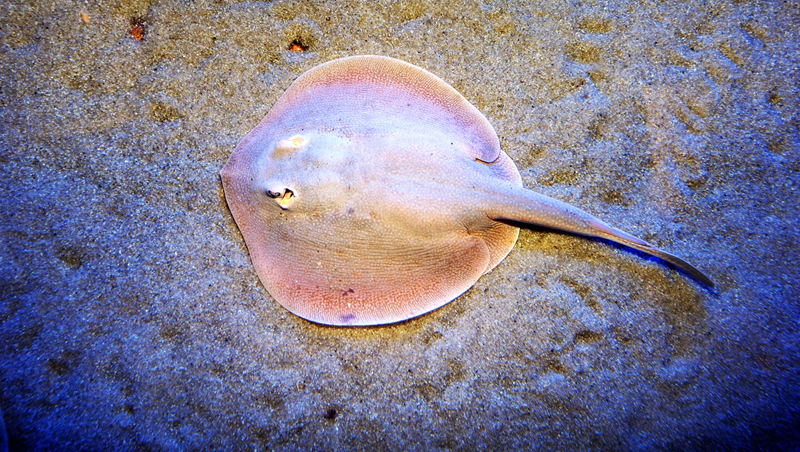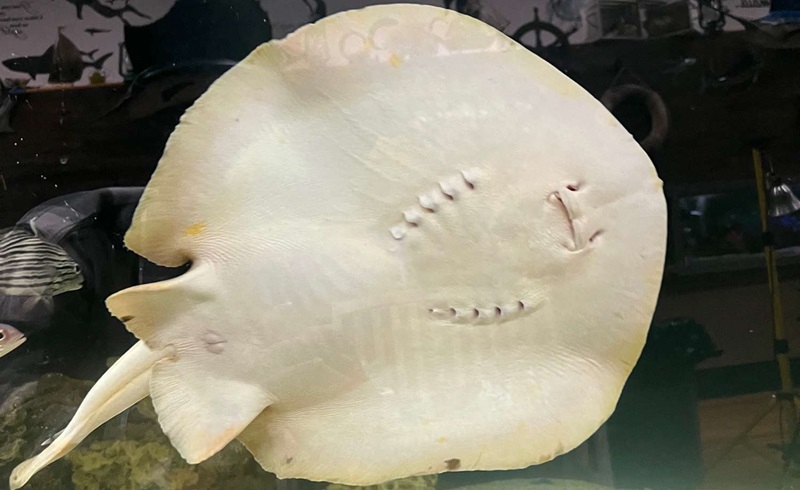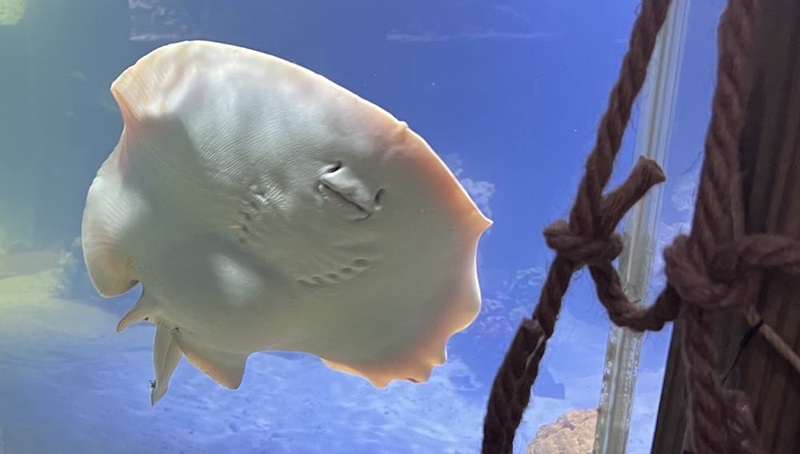It is with heavy hearts that we announce the passing of Charlotte the stingray, a beloved member of the North Carolina Aquarium family. Charlotte was not just a stingray, she was a mother-to-be, carrying precious new life within her. Her unexpected passing has left a void in the hearts of all who knew her.
Charlotte was known for her gentle nature and playful personality, captivating visitors with her graceful movements in the aquarium tank. She was a source of joy and wonder for all who had the privilege of witnessing her beauty. Charlotte’s passing serves as a reminder of the fragility of life, and the importance of cherishing every moment we have with those we hold dear. Though she may no longer be with us, Charlotte’s memory will live on in the hearts of all who knew and loved her. May she rest in peace, knowing that she was cherished and adored by so many.

Remembering Charlotte: A Beloved Aquarium Resident
Charlotte was a beloved resident of the local aquarium, known for her playful antics and friendly demeanor. She had captured the hearts of visitors and staff alike with her graceful swimming and curious nature. From her vibrant orange and white stripes to her distinctive personality, Charlotte was a standout among the other marine creatures in the aquarium.
Her presence brought joy and wonder to all who had the pleasure of watching her glide effortlessly through the water. Whether she was interacting with her fellow fish or simply exploring her surroundings, Charlotte never failed to captivate those around her. Despite her untimely passing, Charlotte’s memory lives on in the hearts of those who were fortunate enough to have known her. She will always be remembered as a cherished member of the aquarium community, leaving behind a legacy of beauty, grace, and friendship.
In honor of Charlotte, the aquarium has dedicated a special exhibit in her memory, showcasing her life and the impact she had on all who crossed her path. Visitors can reflect on the joy she brought and the lessons she taught about the importance of connection, compassion, and appreciation for the world around us. Charlotte may no longer be physically present, but her spirit lives on in the waters of the aquarium and in the memories of all who had the privilege of knowing her.

The Impact of Charlotte’s Loss on the Aquarium Community
The unexpected loss of Charlotte, a beloved member of the aquarium community, has sent shockwaves throughout the industry. Charlotte was not just a fish, but a symbol of hope and inspiration for many aquarium enthusiasts. Her vibrant colors and playful personality brought joy to visitors of all ages. The impact of her loss is profound, as she was not just a part of the community, but a cherished friend to many.
Charlotte’s absence has left a void in the hearts of those who knew her, and her passing serves as a reminder of the fragility of life in the underwater world. The aquarium community is mourning the loss of one of its own, and coming together to support each other during this difficult time. Charlotte’s legacy will live on in the memories of those who were touched by her presence, and her impact on the community will not be forgotten.
Her passing serves as a wake-up call to the importance of conservation efforts and ethical practices within the aquarium industry. As we grieve the loss of Charlotte, we must also reflect on how we can better protect and preserve the marine life that brings us so much joy and wonder. In her memory, we must strive to create a more sustainable and responsible environment for all creatures of the sea.
The Importance of Stingrays in Aquatic Ecosystems
Stingrays play a crucial role in maintaining the health and balance of aquatic ecosystems. As bottom-dwelling creatures, they help to control populations of small fish, crustaceans, and mollusks by feeding on them. This helps to prevent overpopulation of certain species and ensures that resources are not depleted. Additionally, stingrays are an important food source for larger predators such as sharks, helping to regulate their populations as well.
In this way, stingrays serve as a vital link in the food chain of aquatic environments. Furthermore, stingrays also contribute to the health of coral reefs by stirring up sediment on the ocean floor as they forage for food. This helps to oxygenate the water and provide nutrients for other marine life. Without stingrays, these ecosystems would suffer from imbalances and potential collapse. It is essential that we recognize the importance of stingrays in aquatic ecosystems and work to protect and preserve their populations. By doing so, we can ensure the continued health and biodiversity of our oceans and the many species that depend on them for survival.

Efforts to Preserve Charlotte’s Legacy
Charlotte’s legacy is a vital part of our city’s history and identity. Efforts to preserve this legacy are crucial in order to honor the past and educate future generations. One way to do this is through the restoration and maintenance of historic buildings and landmarks that are significant to Charlotte’s history. By preserving these physical reminders of the past, we can ensure that future generations have a tangible connection to their city’s roots.
Additionally, efforts to document and share stories from Charlotte’s history through oral histories, archives, and museums help to keep the legacy alive. These efforts help to ensure that the experiences and contributions of past generations are not forgotten or overlooked. By preserving Charlotte’s legacy, we are not only honoring those who came before us, but also enriching the present and future of our city.
It is important to remember that the preservation of Charlotte’s legacy is a collective responsibility that requires ongoing dedication and commitment from individuals, organizations, and the community as a whole. By working together to protect and promote our city’s history, we can ensure that Charlotte’s legacy continues to inspire and inform us for generations to come.
Understanding the Challenges of Marine Animal Care
Marine animal care presents a unique set of challenges that require a deep understanding of the complex needs of these animals. One of the primary challenges is providing a suitable environment that mimics their natural habitat as closely as possible. This includes ensuring proper water quality, temperature, and salinity levels, as well as creating spaces for the animals to swim, hunt, and socialize. Additionally, marine animals often have specialized diets that must be carefully monitored and adjusted to ensure they are receiving the proper nutrients.
Another challenge is managing the health and well-being of marine animals in captivity. Due to the stress of captivity and the potential for diseases to spread quickly in close quarters, it is essential for caretakers to closely monitor the animals and provide prompt medical care when needed. Furthermore, marine animals are highly intelligent and social creatures, making it important for caretakers to provide enrichment activities to keep them mentally stimulated and prevent boredom and behavioral issues.
Overall, understanding the challenges of marine animal care requires a commitment to continuously learn and adapt to the ever-evolving needs of these fascinating creatures. By prioritizing the well-being of marine animals and staying informed about best practices in care, caretakers can ensure that these animals thrive in captivity and contribute to the conservation of their species.
